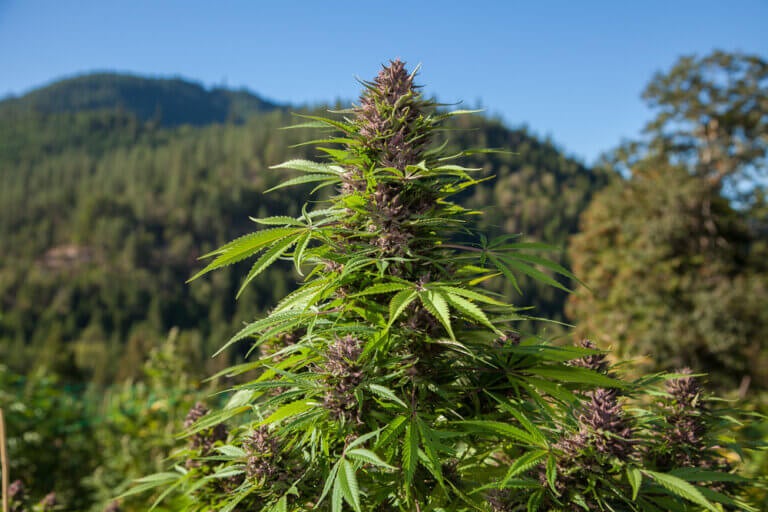Spring is an exciting time for cannabis enthusiasts, marking the beginning of the outdoor growing season and the opportunity to cultivate vibrant and healthy plants under the sun. Whether you’re a novice grower or an experienced cultivator, starting your outdoor cannabis garden on the right foot is essential for success. In this article, we’ll explore tips and tricks for spring sprouts, offering valuable insights to help you kickstart your outdoor cannabis garden and set the stage for a bountiful harvest later in the year.
1. Plan Your Garden Layout: Before diving into planting, take some time to plan your garden layout and design. Consider factors such as available space, sunlight exposure, water access, and potential obstacles like trees, buildings, or fences. Sketch out a rough layout of your garden, indicating where you’ll plant your cannabis beds or containers, as well as any companion plants or features you’d like to include. Planning your garden layout in advance will help optimize space, maximize sunlight exposure, and ensure efficient use of resources throughout the growing season.
2. Choose the Right Cannabis Strains: Selecting the right cannabis strains for your outdoor garden is crucial for success. Consider factors such as climate, growing conditions, and personal preferences when choosing strains. Opt for varieties that are well-suited to your local climate and growing environment, such as indica or hybrid strains that have a shorter flowering time and are more resistant to pests and diseases. Additionally, consider factors like THC and CBD levels, terpene profiles, and desired effects when selecting strains, ensuring a diverse and rewarding cannabis garden.
3. Start Seeds Indoors or Use Clones: Decide whether you’ll start your cannabis plants from seeds indoors or use clones for your outdoor garden. Starting seeds indoors allows you to get a head start on the growing season by germinating seeds in a controlled environment before transplanting them outdoors. Alternatively, using clones involves taking cuttings from mature plants and rooting them before transplanting them into the garden. Consider factors like your local climate, growing season length, and personal preference when deciding which method to use for your outdoor cannabis garden.
4. Prepare Your Soil: Preparing your soil is essential for providing a nutrient-rich growing environment for your cannabis plants. Test your soil pH and nutrient levels using a soil testing kit, and amend the soil as needed to achieve optimal growing conditions. Incorporate organic matter such as compost, aged manure, or worm castings to improve soil structure, fertility, and moisture retention. Additionally, consider adding beneficial microbes, mycorrhizae, and other soil amendments to promote healthy root development and nutrient uptake.
5. Timing Is Key: Timing your outdoor cannabis garden is crucial for maximizing yield and ensuring healthy plant development. Wait until after the last frost date in your region before planting cannabis outdoors to avoid potential damage from cold temperatures and frost. Additionally, consider factors like temperature fluctuations, rainfall patterns, and local climate conditions when timing your outdoor garden. Consulting local gardening resources, such as agricultural extension offices or online planting calendars, can help you determine the optimal timing for planting your cannabis garden.
6. Provide Adequate Sunlight and Water: Cannabis plants thrive in full sunlight, requiring at least 6 to 8 hours of direct sunlight per day for optimal growth and development. Choose a location for your outdoor garden that receives ample sunlight throughout the day, such as south-facing slopes or open fields. Additionally, ensure that your cannabis plants have access to an adequate water supply, especially during the hot summer months. Consider installing drip irrigation systems or soaker hoses to provide consistent moisture to your plants, and monitor soil moisture levels regularly to prevent over- or under-watering.
7. Protect Your Plants: Protecting your cannabis plants from pests, diseases, and environmental stressors is essential for ensuring a successful harvest. Implement integrated pest management (IPM) strategies to prevent and control pest infestations, such as using beneficial insects, companion plants, and natural predators to manage pests organically. Additionally, monitor your plants regularly for signs of pest damage or disease symptoms, and take prompt action to address any issues that arise. Consider using row covers, cloches, or other protective barriers to shield your plants from extreme weather conditions, pests, and other environmental threats.
8. Practice Patience and Persistence: Finally, remember that gardening is a journey, and success often requires patience and persistence. Be prepared to encounter challenges along the way, such as pests, diseases, nutrient deficiencies, and environmental stressors. Approach these challenges with a positive attitude and a willingness to learn, adapt, and grow as a gardener. With dedication, effort, and a little bit of luck, you’ll be rewarded with a bountiful harvest of vibrant, healthy cannabis plants that you can enjoy for months to come.
In conclusion, starting your outdoor cannabis garden on the right foot is essential for success. By planning your garden layout, choosing the right strains, starting seeds indoors or using clones, preparing your soil, timing your garden, providing adequate sunlight and water, protecting your plants, and practicing patience and persistence, you can kickstart your outdoor cannabis garden with confidence and set the stage for a bountiful harvest later in the year. With these tips and tricks for spring sprouts, you’ll be well on your way to cultivating vibrant, healthy cannabis plants that thrive under the sun.
Read More:
Cannabis Clone Gifting: Sharing the Joy of Cultivation
How to Protect your Cannabis Plants from Heat Stress
Different Types of Cannabis Pruning Techniques













